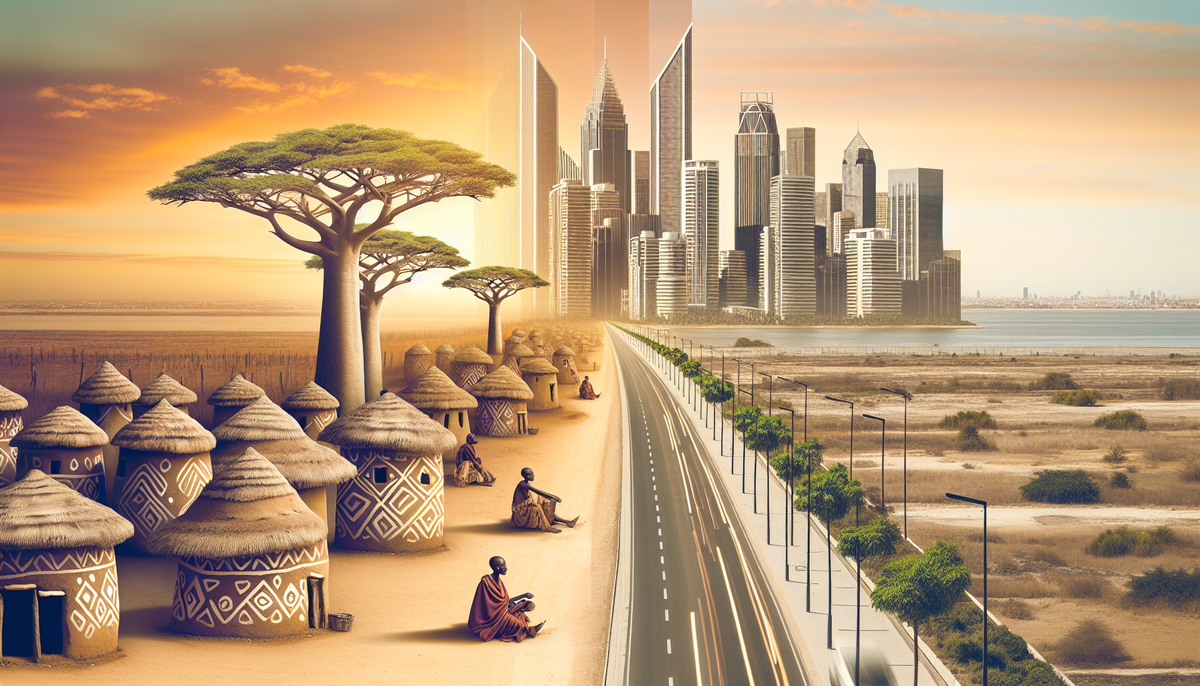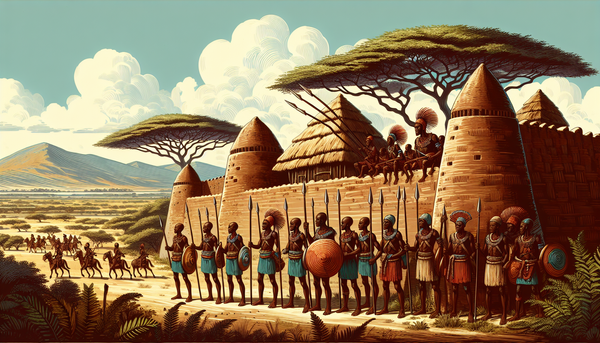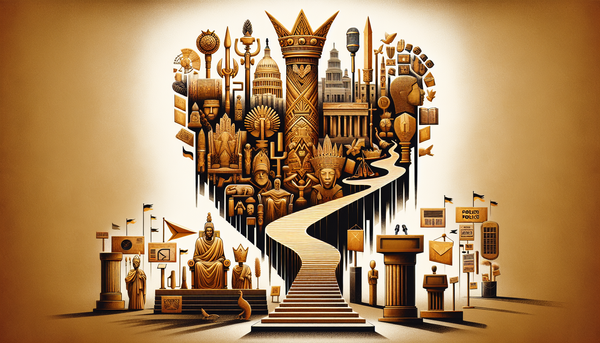The Origins and Evolution of African Cities

Early Settlements and Urbanization in Pre-Colonial Africa
Pre-colonial Africa was characterized by diverse societies and complex interactions that laid the groundwork for early urbanization. Settlements emerged as hubs of trade, religion, and governance, often influenced by geographic features such as rivers, lakes, and fertile plains. The Niger River, for example, facilitated commerce and communication, leading to the growth of significant centers like Timbuktu and Jenne, which were renowned for their wealth and scholarship.
Communities formed around agricultural production, fostering surpluses that enabled specialization and the rise of crafts and trades. The construction of fortified cities, often made with mud or stone, showcased advanced engineering techniques and provided security against external threats. Notably, city-states like Great Zimbabwe became symbols of wealth and power, distinguished by their unique architectural styles and intricate social structures.
Urban centers also served as cultural melting pots, where various ethnic groups interacted, exchanging ideas, languages, and traditions. Religion played a pivotal role in urban life, with sacred sites often located within or nearby these settlements. Ultimately, pre-colonial urbanization in Africa was a dynamic process driven by local resources, environmental factors, and social developments, paving the way for the intricate urban landscapes seen in later periods.
Impact of Trade Routes on City Development
Trade routes significantly influenced city development across Africa, acting as vital arteries that connected various regions and stimulated economic growth. From ancient times, routes traversed the Sahara Desert, the coastlines, and river systems, facilitating the exchange of goods, ideas, and cultures. Major trade networks, such as the trans-Saharan route, promoted the rise of prosperous cities like Timbuktu and Gao, which became critical junctions for merchants and travelers.
These urban centers thrived as commodities such as gold, salt, ivory, and textiles were traded. The resulting wealth attracted scholars, artisans, and religious leaders, contributing to cultural and intellectual advancements. Markets became bustling hubs where diverse communities interacted, fostering a rich tapestry of languages, traditions, and practices.
Additionally, trade routes facilitated the spread of religions and philosophies, such as Islam, which profoundly influenced the social and cultural fabric of cities. The establishment of caravanserais provided resting places for traders and their camels, further integrating urban life with regional commerce.
The interconnectivity created by these routes not only enhanced urban growth but also laid the foundation for political alliances and conflict. As cities adapted to the demands of trade, they became essential players in regional and global commerce, shaping the economic landscape of the continent.
Influence of European Colonization on Urban Landscapes
European colonization had a profound impact on the urban landscapes of Africa, transforming existing cities and establishing new ones in line with colonial interests. Starting in the late 15th century, European powers began exploring and claiming territories across the continent, often disregarding indigenous social structures and governance. Colonizers imposed new administrative frameworks, leading to the restructuring of cities to reflect European ideals of urban planning.
Port cities, such as Lagos and Accra, were developed as key trade hubs, redirecting the flow of resources to Europe and creating a dual economy. European architectural styles were introduced, resulting in the construction of buildings that symbolized colonial power and authority. The establishment of infrastructure, including roads and railways, aimed to facilitate resource extraction and movement, often at the expense of local needs.
Colonial urban policies also led to the segregation of communities, creating distinct residential areas for Europeans and indigenous populations. This spatial division resulted in long-lasting social inequalities and tensions. As independence movements gained momentum in the 20th century, many cities experienced upheaval, prompting a reevaluation of urban spaces that still reflect colonial legacies today. The interplay of colonialism has irrevocably shaped Africa's urban identity and continues to influence contemporary city planning.
Post-Independence Urban Expansion and Challenges
Following independence in the mid-20th century, African cities experienced rapid urban expansion driven by a combination of population growth, rural-to-urban migration, and aspirations for modernity. National governments aimed to capitalize on urbanization as a pathway to economic development, leading to the proliferation of infrastructure projects, housing developments, and social services. Cities like Nairobi, Accra, and Johannesburg transformed into bustling metropolises, symbolizing the hopes and challenges of a newly independent continent.
However, this swift urban growth also brought significant challenges. Many cities struggled to accommodate the influx of migrants seeking better opportunities, leading to the emergence of informal settlements characterized by inadequate housing, limited access to basic services, and environmental degradation. Urban infrastructure often lagged behind, resulting in traffic congestion, water shortages, and unreliable electricity supplies.
Moreover, economic instability and political turmoil affected urban planning and governance, often leading to inadequate policy responses to the demands of rapidly growing populations. This situation perpetuated social inequalities and unrest, as marginalized communities faced limited opportunities for participation in urban development. As cities continue to evolve, addressing these multifaceted challenges remains crucial for fostering sustainable urban environments that enhance the quality of life for all residents.
Modernization and Economic Drivers Shaping Contemporary Cities
In the 21st century, African cities are undergoing significant modernization, driven by economic factors that reshape their landscapes and dynamics. Rapid advancements in technology and infrastructure development have become pivotal in transforming urban centers into vibrant economic hubs. The rise of the digital economy is fostering innovation and entrepreneurship, with many cities emerging as tech hotspots. Lagos, Nairobi, and Cape Town, for instance, are attracting investment in technology startups, leading to the creation of jobs and spurring economic growth.
Moreover, urbanization is being fueled by a burgeoning middle class, which drives demand for consumer goods, services, and real estate. This demographic shift has prompted governments and private investors to focus on large-scale development projects, including shopping centers, transportation networks, and housing initiatives, to cater to the evolving needs of urban populations.
However, this modernization is not without its challenges. The rapid pace of urbanization often exacerbates issues such as informal housing, unemployment, and environmental degradation. Cities must navigate the balance between economic development and sustainable practices to ensure that growth is inclusive and equitable. This ongoing transformation underscores the importance of strategic urban planning that prioritizes resilience and sustainability in the face of changing economic landscapes.
Cultural Contributions to Urban Identity and Heritage
Cultural contributions have profoundly shaped the urban identity and heritage of African cities, creating a rich tapestry of traditions, languages, and artistic expressions. These cities serve as focal points for the preservation and celebration of diverse cultural practices, often reflecting the history and resilience of their communities. The blending of indigenous traditions with colonial and contemporary influences has produced unique urban cultures that are vibrant and distinctive.
Festivals, arts, and music are integral to the cultural landscape of cities like Dakar, Nairobi, and Accra. Cultural events, such as the Dakar Biennale and the Calabar Carnival, draw participants and visitors alike, fostering a sense of community and pride while attracting tourism. Local markets, street art, and public performances showcase the creativity and talent of urban inhabitants, enriching the social fabric of these environments.
Moreover, urban heritage sites—ranging from colonial-era architecture to ancient ruins—play a crucial role in defining a city's character and serve as reminders of its historical narratives. Efforts to document and preserve these cultural assets underscore their significance in promoting local identity and fostering intergenerational connections. As cities continue to evolve, the interplay between culture and urban development remains essential for nurturing a vibrant urban identity and heritage.
Sustainable Urban Planning and Future Prospects
Sustainable urban planning has emerged as a critical focus for African cities in the face of rapid urbanization and environmental challenges. As urban populations continue to grow, the need for green, efficient, and resilient cities has never been more urgent. Sustainable planning emphasizes the integration of eco-friendly practices, equitable access to resources, and community involvement in the decision-making process.
Key strategies include promoting public transportation, developing green spaces, and implementing waste management systems that minimize environmental impact. Cities like Kigali and Addis Ababa are pioneering initiatives that prioritize sustainability, showcasing the potential for urban areas to lead in climate resilience and environmental stewardship.
Furthermore, the incorporation of technology enhances urban planning efforts. Smart city solutions—ranging from energy-efficient buildings to digital public services—improve the quality of life while optimizing resource use.
Looking ahead, future prospects for African cities hinge on collaborative approaches that involve government, private sector, and community partnerships. By prioritizing sustainable practices, cities can not only address immediate challenges but also lay the groundwork for inclusive and resilient urban growth. This vision of sustainability promises not just a better urban environment but also stronger social fabric and economic opportunities for generations to come.



